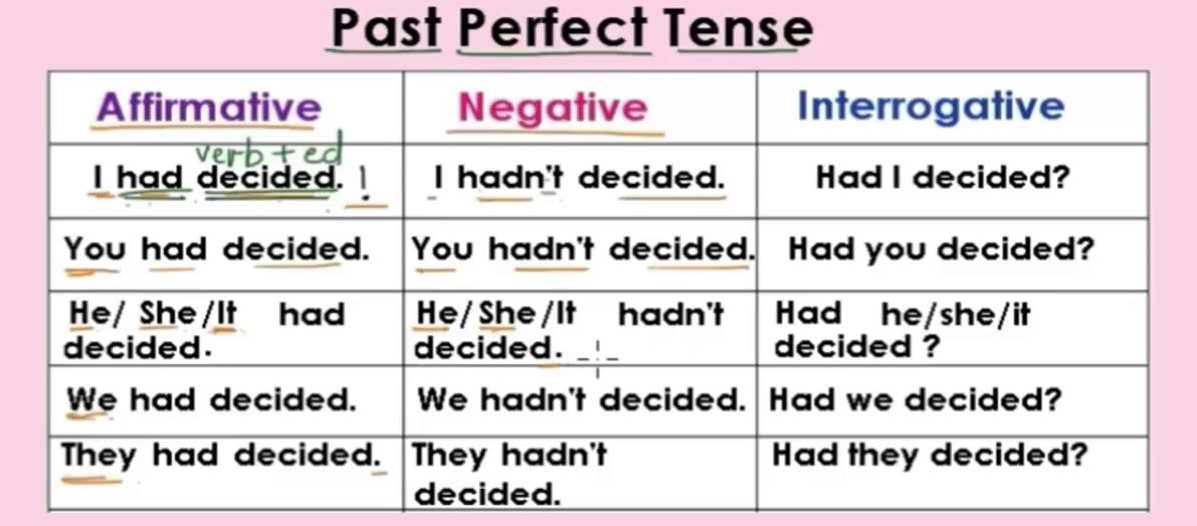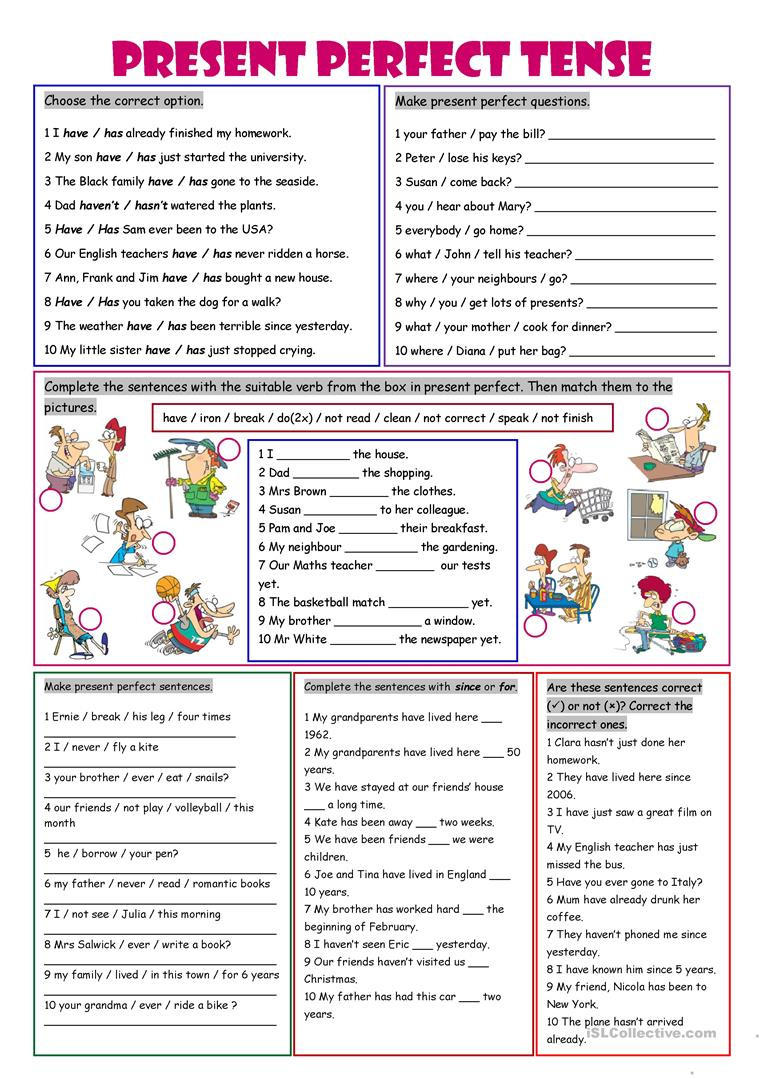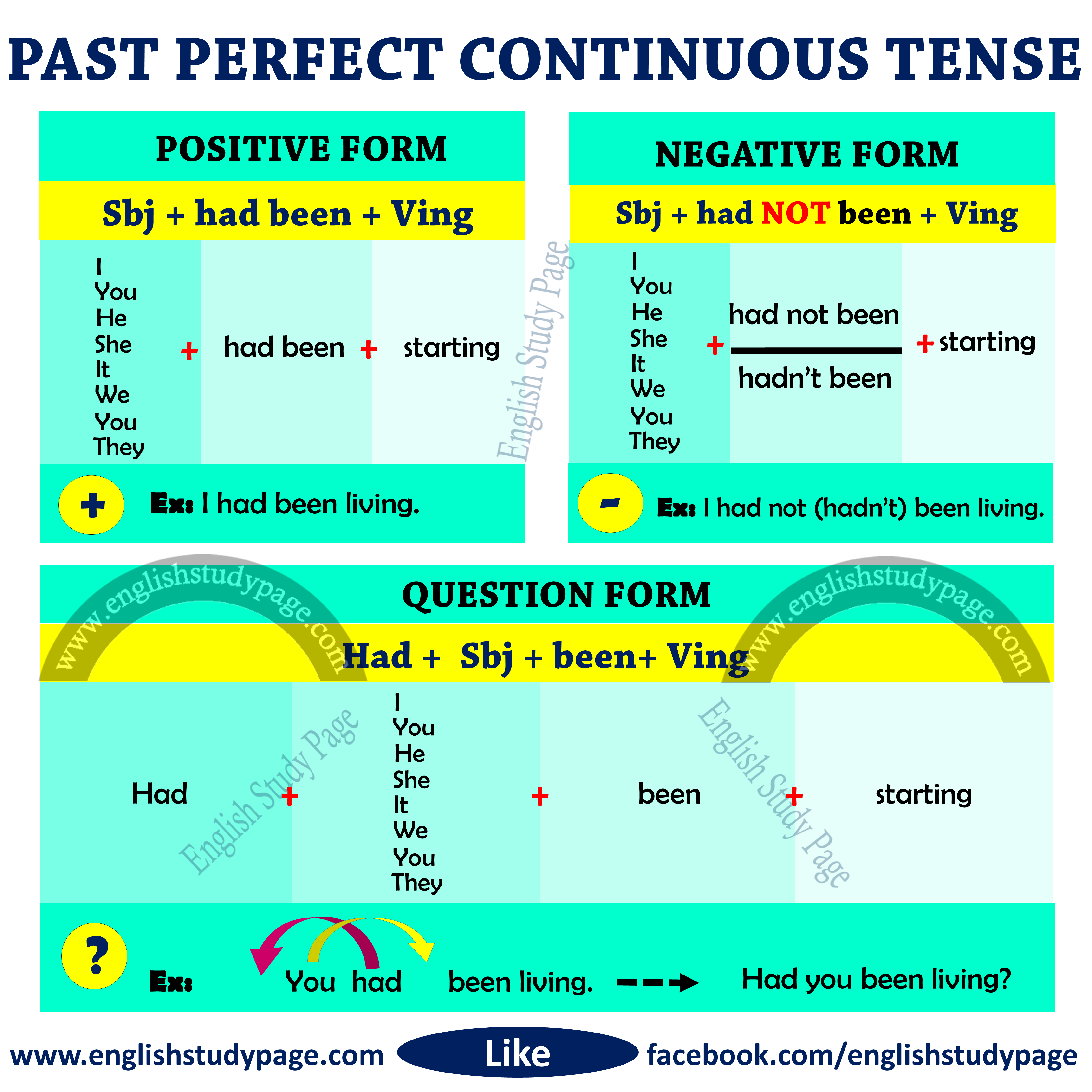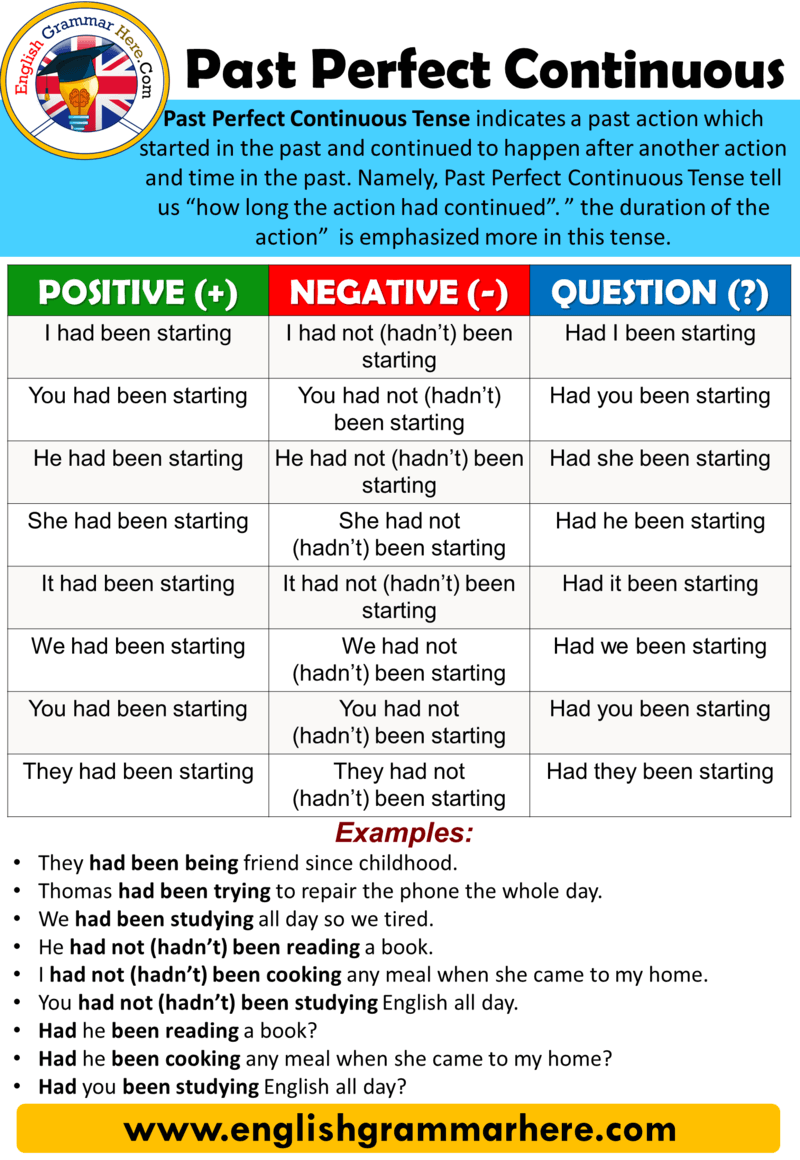

Passive voice: Object + had + been + past participle (V3) + by + subject (past perfect tense)Īctive voice: Subject + had + past participle (V3) + object I had called him before you asked me to do it.Let’s rewrite the above sentences, mentioning the past time markers. It focuses on the fact that the action occurred in the past before a particular time. The second one (past perfect tense) refers to an action that occurred in the past before a particular time focus on the word BEFORE. The first one (simple past tense) refers to an action that occurred at a particular time in the past it’s important to mention that time if it’s not understood already. Most people use the Simple Past tense and the Past Perfect tense interchangeably, not knowing they both have a different purpose to serve in the English language and should be accordingly.ĭon’t both these sentence give the same meaning? 😉 Notice when the contraction I’d means “I would,” it is followed by a base form of a verb(V1), and when it means “I had,” it is followed by a past participle(V3). NOTE: The contraction I’d also means “I would” in English. I’d left the job before the year ended.NOTE: in spoken English, we generally contract the subject (personal pronouns) and the auxiliary verb (had). Here, we are using the past perfect tense to talk about the reason for a particular state of being in the past.


NOTE: In spoken English, we generally contract the helping verb and “not” in a negative sentence. The past perfect tense affirmative sentence Negative sentences Subject NOTE: sometimes, we use a past time marker, not an action, to refer to a time before which the action in the Past Perfect tense took place. We can place the second action ( dependent clause) in the beginning of the sentence either. Note that the action that happened first is in the Past Perfect tense, and the second one is in the Simple Past tense. She hadn’t been to Goa before last year.We had eaten the food already when you came back home.The teacher had ended the class before we took the notes.I had left the party before she arrived.Structure: Subject + had + past participle (V3) + object/modifier (optional) + past time marker (optional) The Past Perfect tense is formed using the past tense of the auxiliary verb “to have” (HAD) and the past participle of the main verb.

Past perfect tense how to#
How to form sentences in the Past perfect tense? The action that refers to the first action uses the Past Perfect tense, and the second action is formed in the Simple Past tense. The past perfect tense is used to talk about actions that happened in the past before another action or a particular time. There is a video lesson attached at the end of the post, so if you prefer learning English through video lectures, scroll down to the end and watch the lesson. In this post, we learn what the Past Perfect tense is and how to form sentences in the Past Perfect tense.


 0 kommentar(er)
0 kommentar(er)
